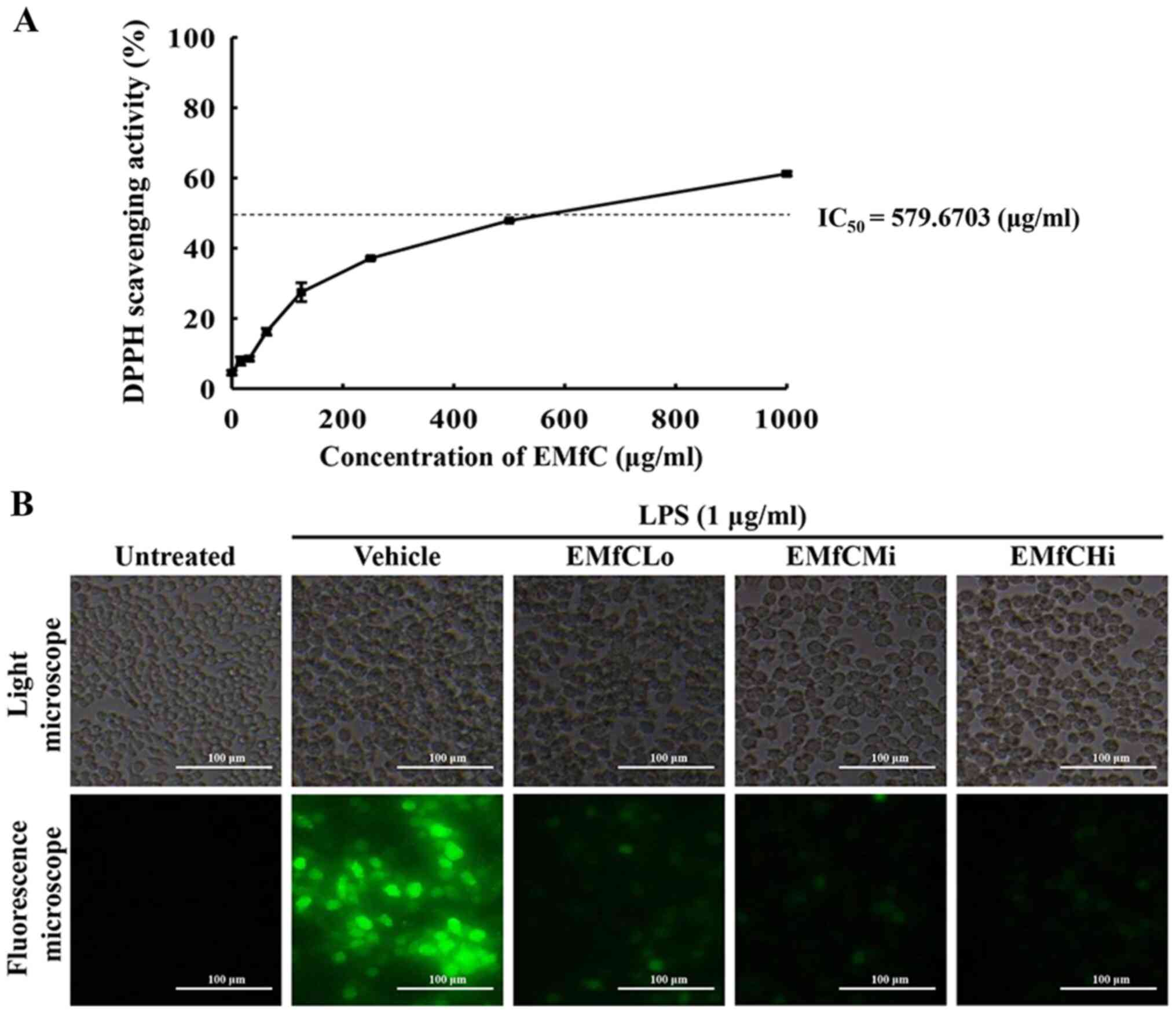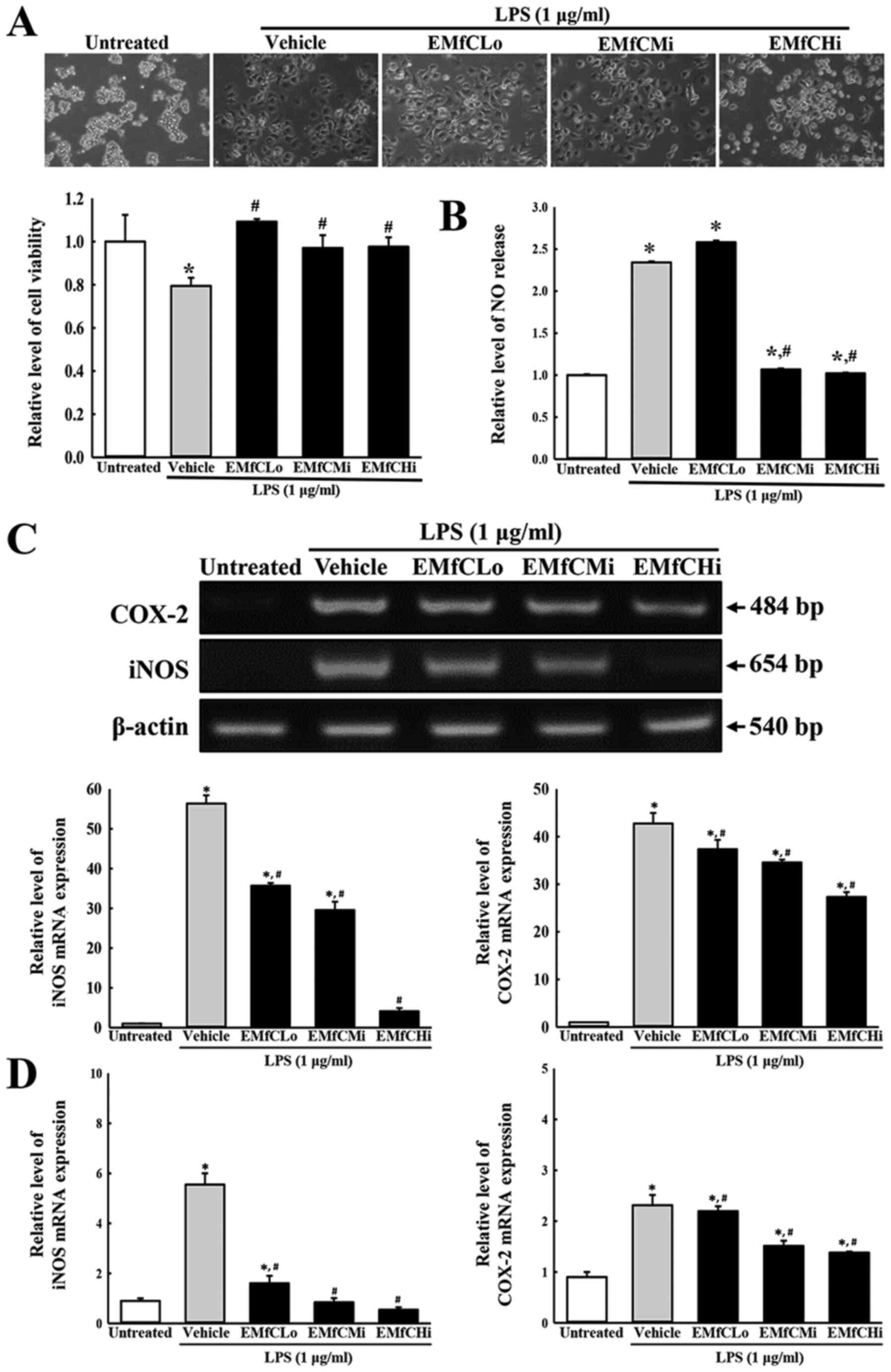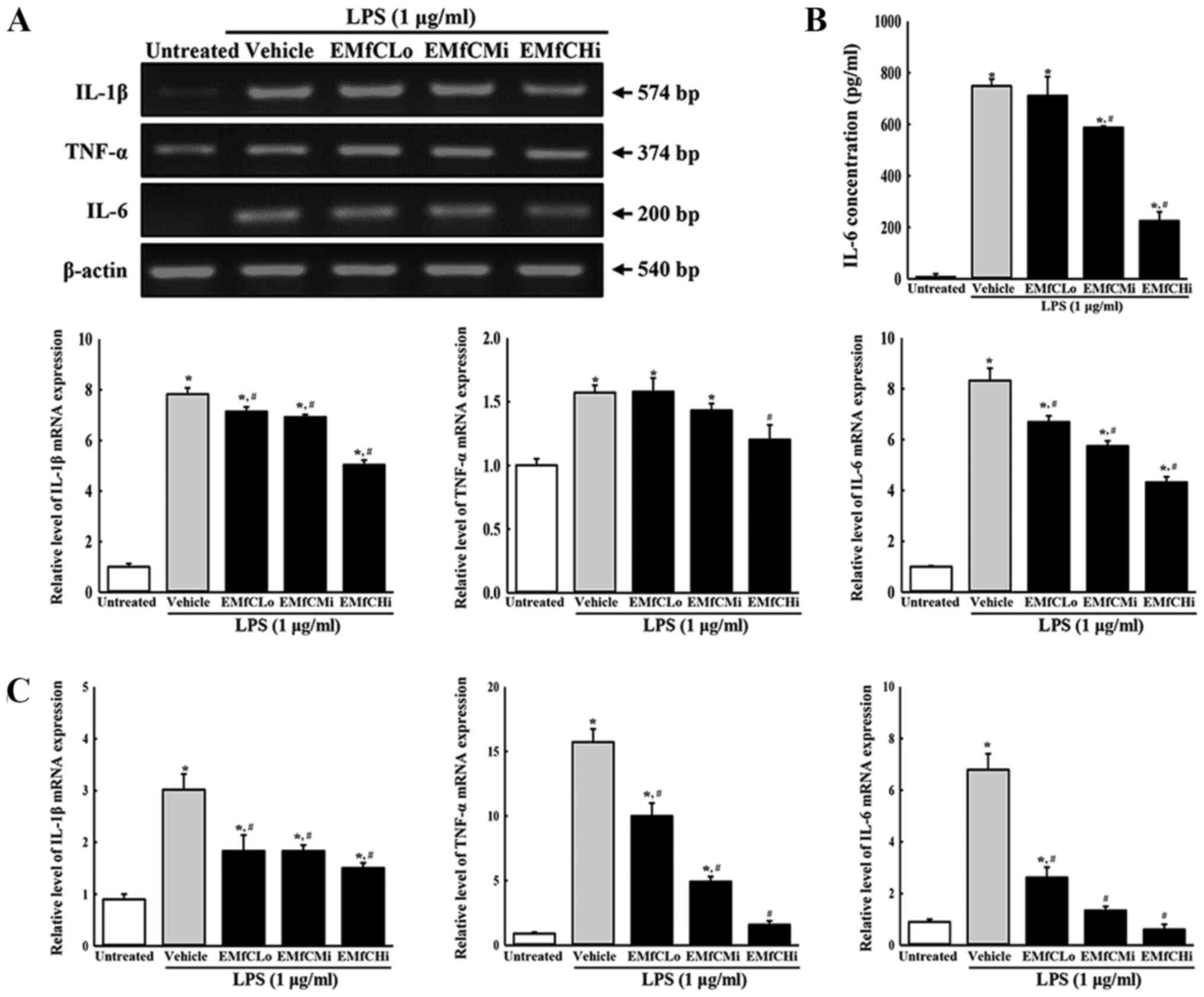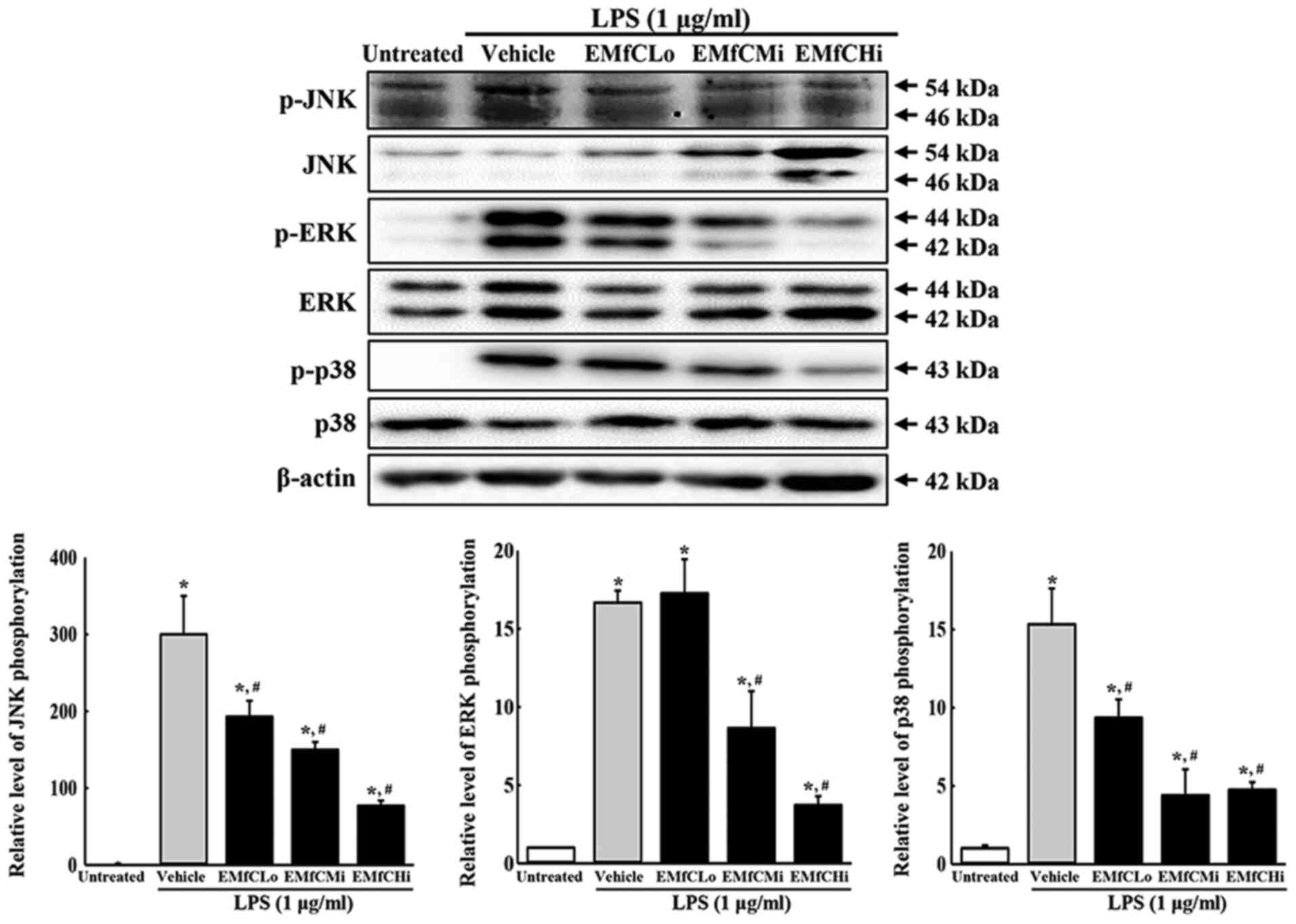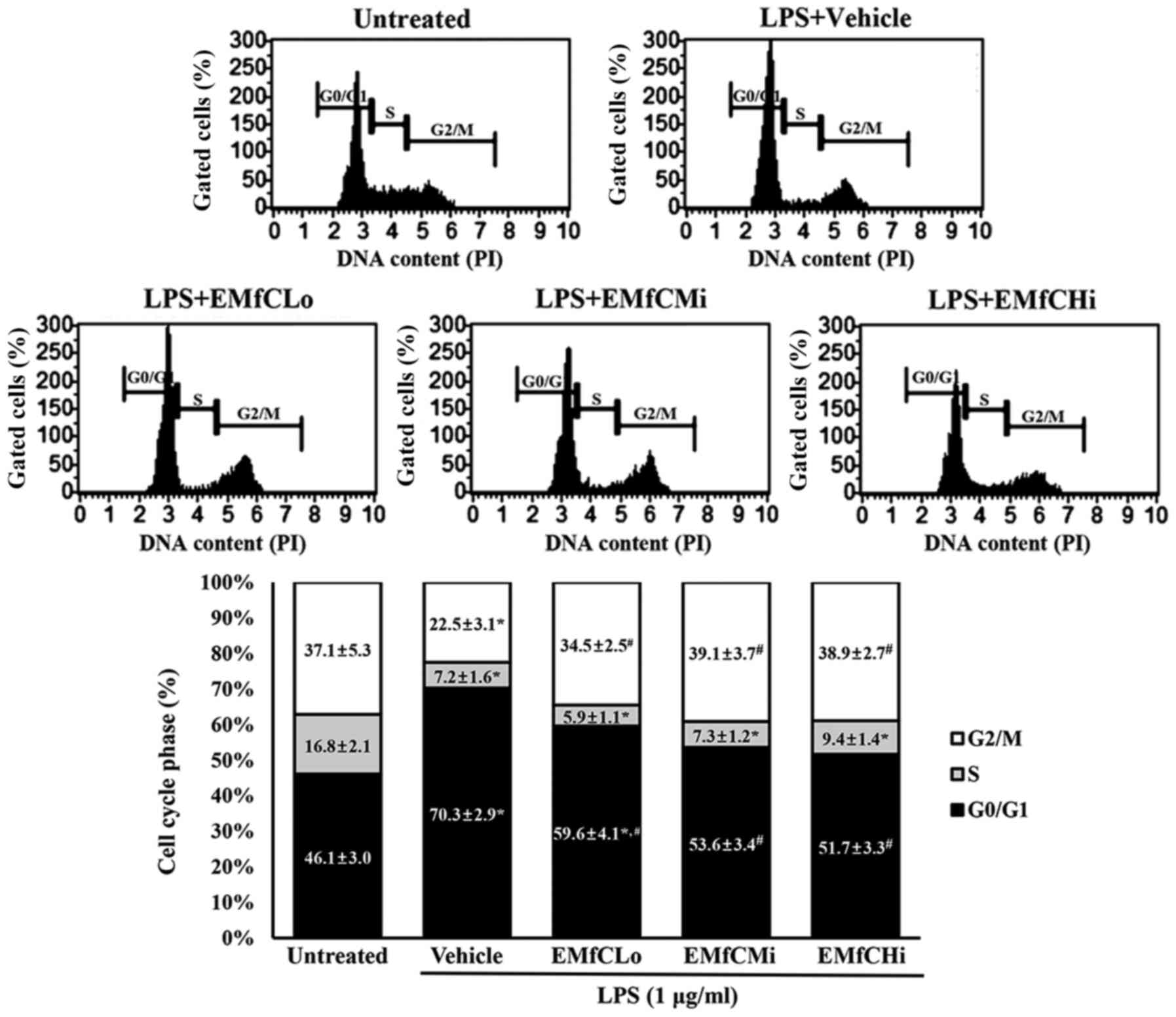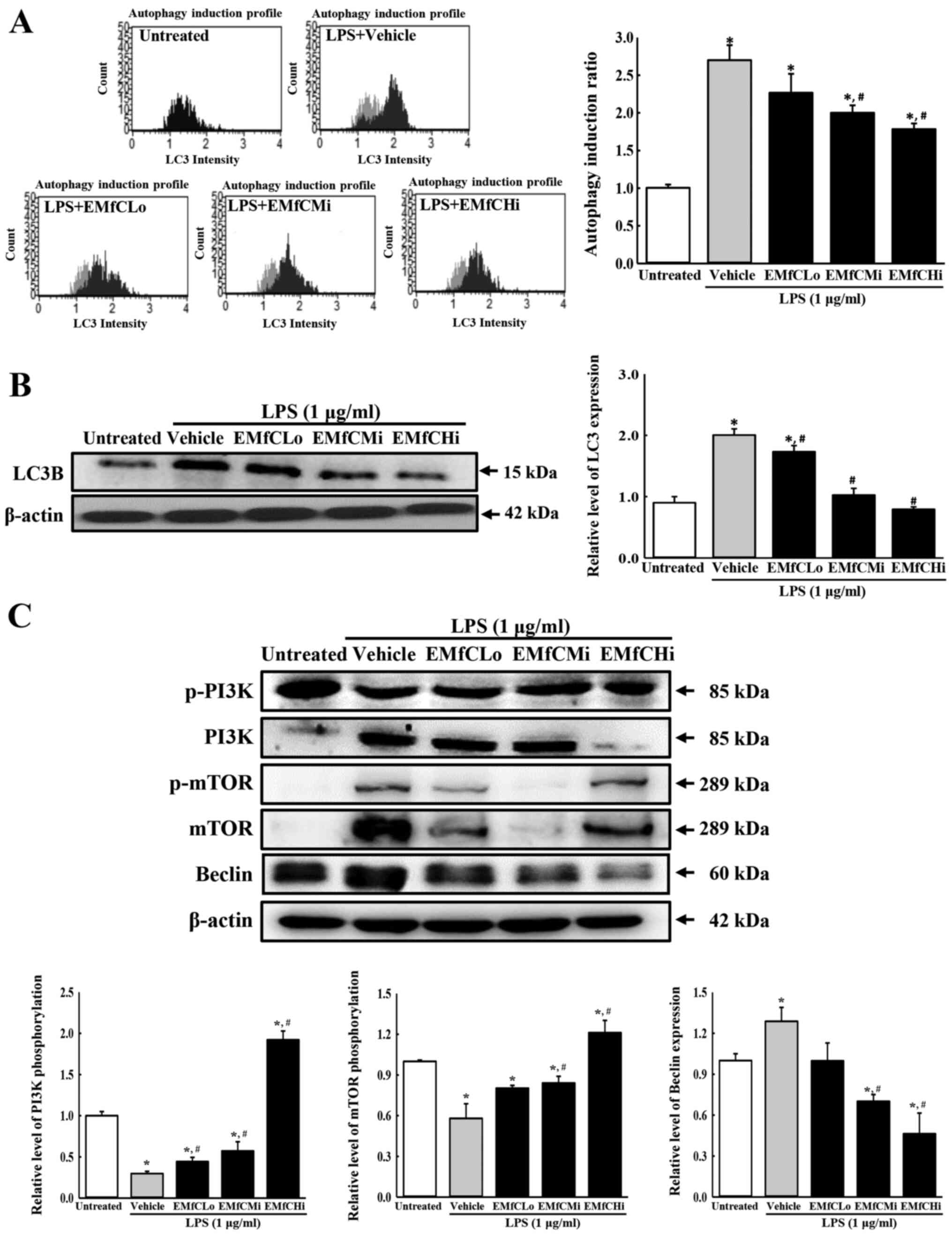|
1
|
Luo A, Leach ST, Barres R, Hesson LB,
Grimm MC and Simar D: The microbiota and epigenetic regulation of T
helper 17/regulatory T cells: In search of a balanced immune
system. Front Immunol. 8:4172017. View Article : Google Scholar : PubMed/NCBI
|
|
2
|
Hawiger J: Innate immunity and
inflammation: A transcriptional paradigm. Immunol Res. 23:99–109.
2001. View Article : Google Scholar : PubMed/NCBI
|
|
3
|
Artis D and Spits H: The biology of innate
lymphoid cells. Nature. 517:293–301. 2015. View Article : Google Scholar : PubMed/NCBI
|
|
4
|
Isailovic N, Daigo K, Mantovani A and
Selmi C: Interleukin-17 and innate immunity in infections and
chronic inflammation. J Autoimmun. 60:1–11. 2015. View Article : Google Scholar : PubMed/NCBI
|
|
5
|
Rock KL, Lai JJ and Kono H: Innate and
adaptive immune response to cell death. Immunol Rev. 243:191–205.
2011. View Article : Google Scholar : PubMed/NCBI
|
|
6
|
Waisman A, Liblau RS and Becher B: Innate
and adaptive immune responses in the CNS. Lancet Neurol.
14:945–955. 2015. View Article : Google Scholar : PubMed/NCBI
|
|
7
|
Beutler B, Krochin N, Milsark IW, Luedke C
and Cerami A: Control of cachectin (tumor necrosis factor)
synthesis: Mechanisms of endotoxin resistance. Science.
232:977–980. 1986. View Article : Google Scholar : PubMed/NCBI
|
|
8
|
Hou XL, Tong Q, Wang WQ, Shi CY, Xiong W,
Chen J, Liu X and Fang JG: Suppression of inflammatory responses by
dihydromyricetin, a flavonoid from ampelopsis grossedentata, via
inhibiting the activation of NF-κB and MAPK signaling pathways. J
Nat Prod. 78:1689–1696. 2015. View Article : Google Scholar : PubMed/NCBI
|
|
9
|
Kim HY, Hwang KW and Park SY: Extracts of
Actinidia arguta stems inhibited LPS-induced inflammatory
responses through nuclear factor-κB pathway in Raw 264.7 cells.
Nutr Res. 34:1008–1016. 2014. View Article : Google Scholar : PubMed/NCBI
|
|
10
|
Flaczyk E, Kobus-Cisowska J, Przeor M,
Korczak J, Remiszewski M, Korbas E and Buchowski M: Chemical
characterization and antioxidative properties of Polish variety of
Morus alba L. leaf aqueous extracts from the laboratory and
pilot-scale processes. Agric Sci. 4:141–147. 2013.
|
|
11
|
Thanchanit T, Surawej N and Pornanong A:
Mulberry leaves and their potential effects against cardiometabolic
risks: A review of chemical compositions, biological properties and
clinical efficacy. Pharm Biol. 56:109–118. 2018. View Article : Google Scholar : PubMed/NCBI
|
|
12
|
Gunjal S, Ankola AV and Bhat K: In vitro
antibacterial activity of ethanolic extract of Morus alba
leaf against pathogens. Indian J Dent Res. 26:533–536. 2015.
View Article : Google Scholar : PubMed/NCBI
|
|
13
|
Raman ST, Ganeshan AK, Chen C, Jin C, Li
SH, Chen HJ and Gui Z: In vitro and in vivo
antioxidant activity of flavonoid extracted from mulberry fruit
(Morus alba L.). Pharmacogn Mag. 12:128–133. 2016.
View Article : Google Scholar : PubMed/NCBI
|
|
14
|
Wang Y, Xiang L, Wang C, Tang C and He X:
Antidiabetic and antioxidant effects and phytochemicals of mulberry
fruit (Morus alba L.) polyphenol enhanced extract. PLoS One.
8:e711442013. View Article : Google Scholar : PubMed/NCBI
|
|
15
|
Jo SP, Kim JK and Lim YH:
Antihyperlipidemic effects of stilbenoids isolated from Morus
alba in rats fed a high-cholesterol diet. Food Chem Toxicol.
65:213–218. 2014. View Article : Google Scholar : PubMed/NCBI
|
|
16
|
Chan EW, Lye PY and Wong SK:
Phytochemistry, pharmacology, and clinical trials of Morus
alba. Chin J Nat Med. 14:17–30. 2016.PubMed/NCBI
|
|
17
|
Lee MR, Kim JE, Choi JY, Park JJ, Kim HR,
Song BR, Choi YW, Kim KM, Song H and Hwang DY: Anti-obesity effect
in high-fat-diet-induced obese C57BL/6 mice: Study of a novel
extract from mulberry (Morus alba) leaves fermented with
Cordyceps militaris. Exp Ther Med. 17:2185–2193.
2019.PubMed/NCBI
|
|
18
|
Lee MR, Bae SJ, Kim JE, Song BR, Choi JY,
Park JJ, Park JW, Kang MJ, Choi HJ, Choi YW, et al: Inhibition of
endoplasmic reticulum stress in high-fat-diet-induced obese C57BL/6
mice: Efficacy of a novel extract from mulberry (Morus alba)
leaves fermented with Cordyceps militaris. Lab Anim Res.
34:288–294. 2018. View Article : Google Scholar : PubMed/NCBI
|
|
19
|
De Silva DD, Rapior S, Sudarman E, Stadler
M, Xu J, Alias SA and Hyde KD: Bioactive metabolites from
macrofungi: Ethnopharmacology, biological activities and chemistry.
Fungal Divers. 62:1–40. 2013. View Article : Google Scholar
|
|
20
|
Silva DD, Rapior S, Fons F, Bahkali AH and
Hyde KD: Medicinal mushrooms in supportive cancer therapies: An
approach to anti-cancer effects and putative mechanisms of action.
Fungal Divers. 55:1–35. 2012. View Article : Google Scholar
|
|
21
|
Kim JR, Yeon SH, Kim HS and Ahn YJ:
Larvicidal activity against plutella xylostella of
cordycepin form fruiting body of Cordyceps militaris. Pest
Manag Sci. 58:713–717. 2012. View
Article : Google Scholar
|
|
22
|
Ramesh T, Yoo SK, Kim SW, Hwang SY, Sohn
SH, Kim IW and Kim SK: Cordycepin (3′-deoxyadenosine) attenuates
age-related oxidative stress and ameliorates antioxidant capacity
in rats. Exp Gerontol. 47:979–987. 2012. View Article : Google Scholar : PubMed/NCBI
|
|
23
|
Hung YP and Lee CL: Higher anti-liver
fibrosis effect of Cordyceps militaris-fermented product
cultured with deep ocean water via inhibiting proinflammatory
factors and fibrosis-related factors expressions. Mar Drugs.
15:1682017. View Article : Google Scholar
|
|
24
|
Oh H, Ko EK, Kim DH, Jang KK, Park SE, Lee
HS and Kim YC: Secoiridoid glucosides with free radical scavenging
activity from the leaves of Syringa dilatate. Phytother Res.
17:417–419. 2003. View
Article : Google Scholar : PubMed/NCBI
|
|
25
|
Sun J, Zhang X, Broderick M and Fein H:
Measurement of nitric oxide production in biological systems by
using griess reaction assay. Sensors. 3:276–284. 2003. View Article : Google Scholar
|
|
26
|
Choi EA, Park HY, Yoo HS and Choi YH:
Anti-inflammatory effects of egg white combined with chalcanthite
in lipopolysaccharide-stimulated BV2 microglia through the
inhibition of NF-κB, MAPK and PI3K/Akt signaling pathways. Int J
Mol Med. 31:134–162. 2012.
|
|
27
|
Livak KJ and Schmittgen TD: Analysis of
relative gene expression data using real-time quantitative PCR and
the 2(-Delta C(T)) method. Methods. 25:402–408. 2001. View Article : Google Scholar : PubMed/NCBI
|
|
28
|
Prescott LM, Harley JP and Klein DA:
Microbiology. 6th edition. McGraw-Hill; New York, NY: 2006
|
|
29
|
Trinh HT, Han SJ, Kim SW, Lee YC and Kim
DH: Bifidus fermentation increases hypolipidemic and hypoglycemic
effects of red ginseng. J Microbiol Biotechnol. 17:1127–1133.
2007.PubMed/NCBI
|
|
30
|
Kim YJ and Park WS: Anti-inflammatory
effect of quercetin on RAW 264.7 mouse macrophages induced with
polyinosinic-polycytidylic acid. Molecules. 21:4502016. View Article : Google Scholar : PubMed/NCBI
|
|
31
|
Song MH, Bae JT, Ko HJ, Jang TM, Lee JD,
Lee GS and Pyo HB: Anti-oxidant effect and anti-inflammatory of
fermented Citrus Unshiu peel extract by using
Schizophyllum commune. J Soc Cosmet Sci Korea. 37:351–356.
2011.
|
|
32
|
Liu RL, Ren SF and Wang YZ: Influence of
the fermentation Cordyceps sinensisfy powder on blood uric
acid and lipid in the cases of essential hypertension. World Clin
Drugs. 27:498–502. 2006.
|
|
33
|
Choi EM and Hwang JK: Effects of Morus
alba leaf extract on the production of nitric oxide,
prostaglandin E2 and cytokines in RAW264.7 macrophages.
Fitoterapia. 76:608–613. 2005. View Article : Google Scholar : PubMed/NCBI
|
|
34
|
John JH: Antioxidant and prooxidant
mechanisms in the regulation of redox(y)-sensitive transcription
factors. Cell Signal. 14:879–897. 2002. View Article : Google Scholar : PubMed/NCBI
|
|
35
|
Ohshima H and Bartsch H: Chronic
infections and inflammatory processes as cancer risk factors:
Possible role of nitric oxide in carcinogenesis. Mutat Res.
305:253–264. 1994. View Article : Google Scholar : PubMed/NCBI
|
|
36
|
Muniandy K, Gothai S, Badran KMH, Suresh
Kumar S, Esa NM and Arulselvan P: Suppression of proinflammatory
cytokines and mediators in LPS-induced RAW 264.7 macrophages by
stem extract of alternanthera sessilis via the inhibition of
the NF-κB pathway. J Immunol Res. 2018:34306842018. View Article : Google Scholar : PubMed/NCBI
|
|
37
|
Lin HI, Chu SJ, Wang D and Feng NH:
Pharmacological modulation of TNF production in macrophages. J
Microbiol Immunol Infect. 37:8–15. 2004.PubMed/NCBI
|
|
38
|
Abbas A, Lichtman A and Pillai S: Cellular
and Molecular Immunology. (6th edition). Seoul. 271–296. 2008.
|
|
39
|
Cuervo AM: Autophagy: In sickness and in
health. Trends Cell Biol. 14:70–77. 2004. View Article : Google Scholar : PubMed/NCBI
|
|
40
|
Sridhar S, Botbol Y, Macian F and Cuervo
AM: Autophagy and disease: Always two sides to a problem. J Pathol.
226:255–273. 2012. View Article : Google Scholar : PubMed/NCBI
|
|
41
|
Kim J, Kundu M, Viollet B and Guan KL:
AMPK and mTOR regulate autophagy through direct phosphorylation of
Ulk1. Nat Cell Biol. 13:132–141. 2011. View Article : Google Scholar : PubMed/NCBI
|
|
42
|
Deretic V: Multiple regulatory and
effector roles of autophagy in immunity. Curr Opin Immunol.
21:53–62. 2009. View Article : Google Scholar : PubMed/NCBI
|
|
43
|
Orvedahl A and Levine B: Eating the enemy
within: Autophagy in infectious diseases. Cell Death Differ.
16:57–69. 2009. View Article : Google Scholar : PubMed/NCBI
|
|
44
|
Xu J, Zhao Y and Aisa HA:
Anti-inflammatory effect of pomegranate flower in
lipopolysaccharide (LPS)-stimulated RAW264.7 macrophages. Pharm
Biol. 55:2095–2101. 2017. View Article : Google Scholar : PubMed/NCBI
|
|
45
|
Sugiyama Y, Hiraiwa Y, Hagiya Y, Nakajima
M, Tanaka T and Ogura SI: 5-Aminolevulinic acid regulates the
immune response in LPS-stimulated RAW 264.7 macrophages. BMC
Immunol. 19:412018. View Article : Google Scholar : PubMed/NCBI
|
|
46
|
Dong J, Li J, Cui L, Wang Y, Lin J, Qu Y
and Wang H: Cortisol modulates inflammatory responses in
LPS-stimulated RAW264.7 cells via the NF-κB and MAPK pathways. BMC
Vet Res. 14:302018. View Article : Google Scholar : PubMed/NCBI
|
|
47
|
Lee DS, Hwang IH, Im NK, Jeong GS and Na
MK: Anti-inflammatory effect of dactyloquinone B and
cyclospongiaquinone-1 mixture in RAW264.7 macrophage and ICR mice.
Nat Prod Sci. 21:268–272. 2015. View Article : Google Scholar
|















